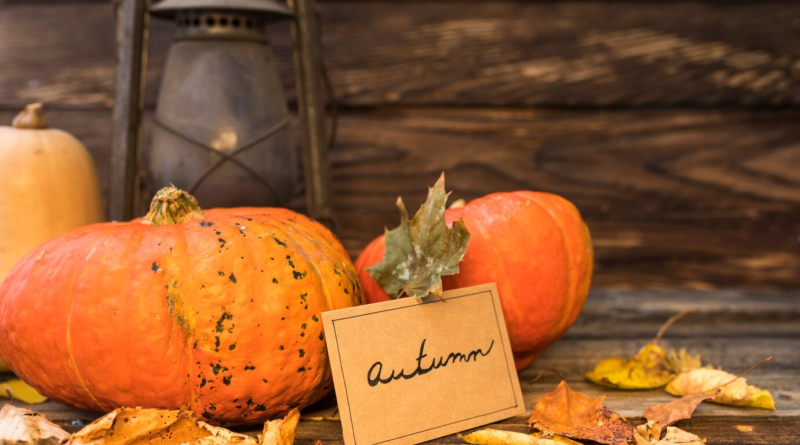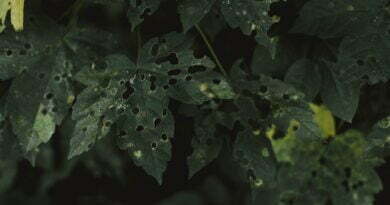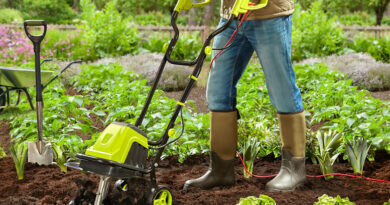October’s Allotment Guide: Gathering the Last Crops and Getting Winter Ready
As the days shorten and the air turns crisp, October brings a tangible shift to the allotment. Autumn has firmly arrived, blending the satisfaction of harvest with the quiet preparation for winter. For allotment keepers like me, this month is both a moment to reflect on the fruits of our hard work and a reminder to nurture the soil for the seasons ahead.
Some crops are ready for picking, while others need care to withstand the colder weather. At the same time, plans for spring are already beginning to take root. In this blog, I’ll share my key October tasks on the allotment from gathering the last of the summer harvest to readying the beds for winter and preparing for what’s to come.

Harvesting Late Crops
October is still a harvest month for many late-season vegetables, and it’s important to gather them before the first hard frosts. Some crops that I’m harvesting this month include:
- Pumpkins and Squash: As Halloween approaches, October is the perfect time to harvest pumpkins and winter squash. I carefully cut them from the vine, leaving a few inches of the stalk attached. This helps prolong their storage life. After harvesting, I leave them to cure in a sunny spot for about a week, which hardens their skin and makes them suitable for long-term storage.
- Carrots and Beets: Carrots and beets can be harvested well into the autumn. For carrots, I find it best to leave them in the ground as long as possible, as they sweeten with the colder temperatures. However, if a hard frost is forecast, I lift them and store them in boxes of sand in my shed.
- Leeks and Parsnips: Both leeks and parsnips are hardy crops that can remain in the ground until I need them over winter. In October, I start using some of my leeks, cutting the stems from the bottom as needed. Parsnips, too, benefit from frost, which improves their flavor, so I tend to leave these until later.
- Cabbages and Broccoli: I’m harvesting the last of my summer cabbages and broccoli this month, as they won’t survive much longer without protection. However, the later varieties, like kale and Brussels sprouts, are coming into their prime and will remain productive well into winter.
Clearing Spent Crops and Tidying Up
Once the main summer crops are harvested, the next task is to clear out the spent plants. October is the perfect time to give the allotment a thorough clean-up:
- Remove Dead Plants: Any crops that have finished producing, such as courgettes, beans, and tomatoes, should be removed. Leaving dead plants in the ground can harbor pests and diseases, so I compost what I can and discard anything that looks diseased.
- Weeding: This is also a good opportunity to get on top of any weeds. Weeding in October is crucial because it prevents them from setting seed and spreading further next season. Once the beds are clear, I often cover them with black plastic or mulch to keep weed growth down over winter.
- Cutting Back Perennials: If you have perennial crops such as rhubarb or artichokes, now is the time to cut them back. Rhubarb leaves should be removed, but the crown can be left to rest over the winter months, sometimes with a layer of mulch for added protection.

Composting and Mulching
With so many plants being cleared away, October generates a lot of organic material that can be composted. A well-maintained compost heap is essential for enriching your soil, so here’s how I handle composting this time of year:
- Adding Organic Matter: I add all my non-diseased plant material, grass clippings, and kitchen scraps to the compost heap. It’s important to maintain a good balance between green (nitrogen-rich) and brown (carbon-rich) materials to ensure the compost breaks down efficiently. I also turn the compost regularly to keep it aerated.
- Mulching Beds: After clearing and weeding my beds, I apply a thick layer of mulch. This could be well-rotted manure, homemade compost, or even leaf mold. Mulching helps to suppress weeds, retain moisture, and improve the soil structure over the winter.
- Collecting Leaves: Fallen leaves are a fantastic resource for the allotment, so I always collect them to make leaf mold. Leaf mold takes a couple of years to break down, but it’s excellent for improving soil texture. I collect the leaves in a wire bin or black plastic bags with holes poked in them and leave them to decompose.
Planting Winter Crops
Although October may seem like the end of the growing season, there are still plenty of crops that can be planted to ensure a continuous harvest through the colder months:
- Garlic and Onions: This is the ideal time to plant garlic and overwintering onions. I plant my garlic cloves and onion sets directly into well-prepared beds, spacing them out to allow room for growth over the winter. Garlic, in particular, benefits from a cold period to develop properly, so planting in October ensures a strong harvest next summer.
- Broad Beans: Another crop that can be sown in autumn is broad beans. I plant mine towards the end of October in well-drained soil. Sowing now gives the beans a head start, and they’ll be ready for harvesting earlier than spring-sown crops.
- Winter Lettuce and Spinach: If you have some protection like a cloche or cold frame, it’s possible to grow winter lettuce and spinach. I sow these in early October and place them under a cloche to keep them growing through the colder months.

Preparing for Frost
As frosty nights become more frequent, it’s important to protect any crops that are still growing:
- Fleece and Cloches: I cover tender crops like late beans and tomatoes with fleece or cloches to protect them from light frosts. For more delicate vegetables like lettuce, the extra warmth provided by cloches can extend the growing season by a few weeks.
- Harvesting Frost-Sensitive Crops: Any crops that can’t handle frost, such as tomatoes, should be harvested before the first hard frost. If you have green tomatoes, they can be brought inside to ripen on a windowsill.
Planning for Next Year
While October is a busy month for clearing and harvesting, it’s also the perfect time to start thinking about next year’s growing season. Some of my key planning tasks for October include:
- Crop Rotation: I review my planting plan and make notes about where different crops were grown this year to ensure proper crop rotation next season. This helps prevent the build-up of soil-borne diseases and ensures that the soil’s nutrients are used efficiently.
- Ordering Seeds: October is a great time to browse seed catalogs and decide what to grow next year. I like to take stock of any seeds I have left and make a list of new varieties I’d like to try. Ordering early means I’m ready to start sowing as soon as spring arrives.
- Tool Maintenance: With the growing season winding down, I take the opportunity to clean and sharpen my tools. Properly maintained tools make the job easier and ensure that I’m ready to hit the ground running when spring arrives.

Enjoying the Autumn Allotment
October isn’t only about hard work; it’s also a time to pause and appreciate the beauty of the season. The allotment in autumn holds a calm, quiet charm that I always look forward to. The golden leaves, the crisp air, and the gentler pace of work make it the perfect setting to reflect on the year’s efforts and enjoy the space I’ve nurtured.
I like to bring along a flask of hot tea and sit for a while, taking in the colours and the progress I’ve made, while mentally noting the tasks ahead. It’s a deeply satisfying time of year a blend of harvest and preparation that keeps me grounded in the rhythm of the garden.
October marks a true turning point on the allotment. It’s a month for gratitude and groundwork: gathering what the season has given, clearing and composting, and planning for what’s next. By embracing these tasks, the plot remains healthy and productive year‑round. Whether you’re a seasoned grower or just starting out, there’s no better time to enjoy the peace and promise of the autumn allotment.




